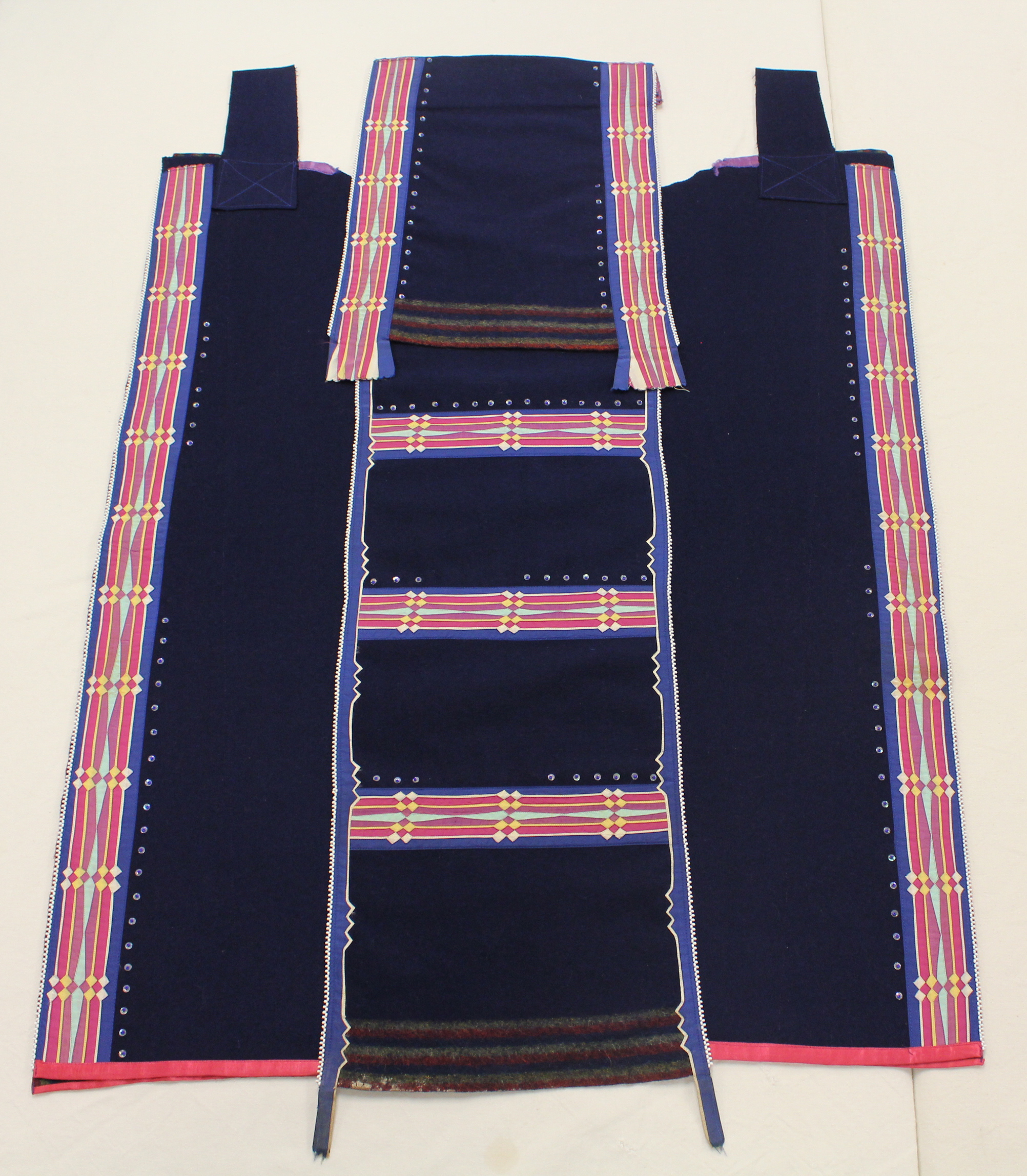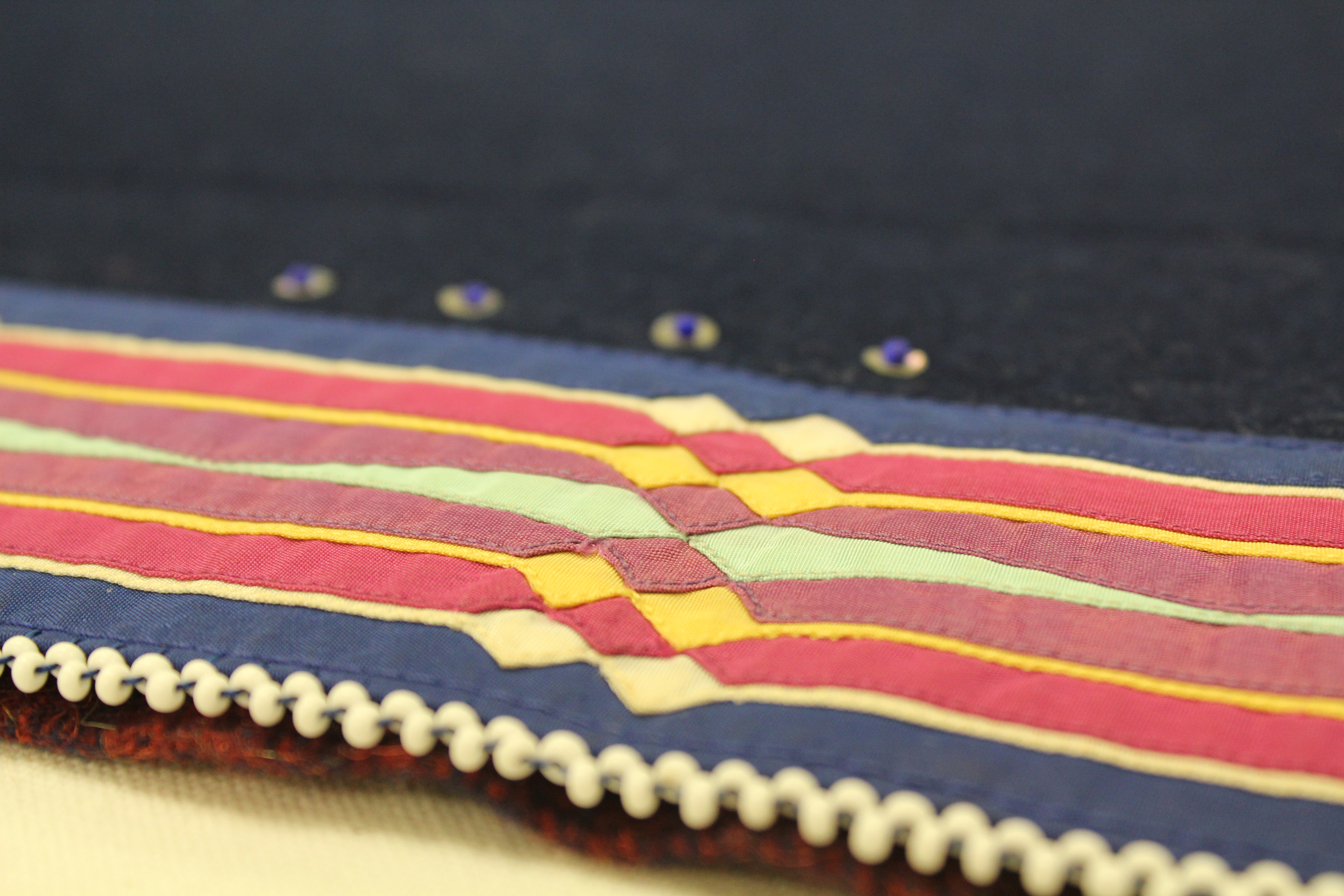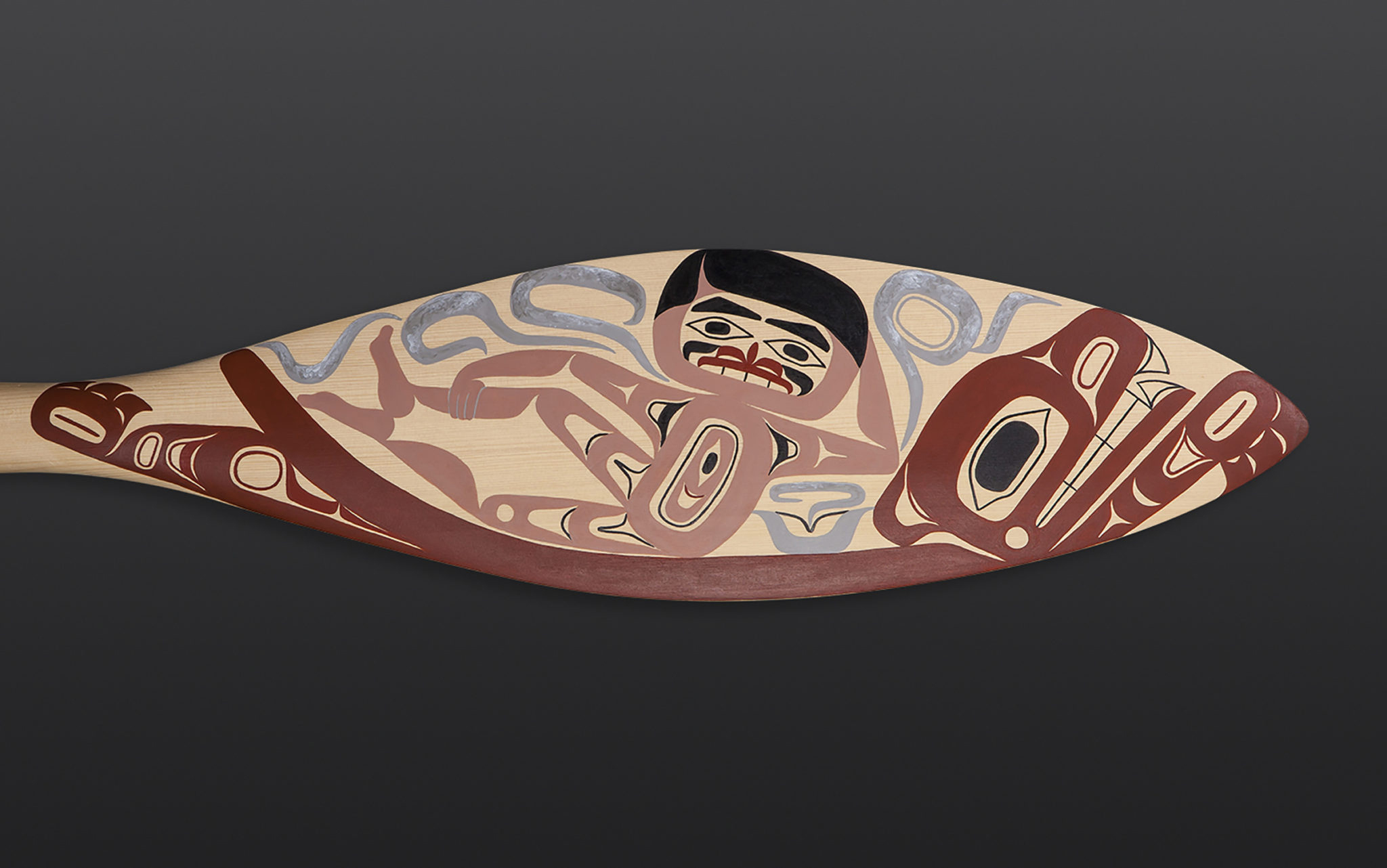Jami Powell, Associate Curator of Native American Art, Hood Museum of Art, Dartmouth College
Visiting with Objects and Institutions
As a citizen of the Osage Nation, my path to working with American Indian art and material culture emerged from my own experiences with art in my community and family. My great-grandmother was Georgeann Gray Robinson, a renowned ribbon worker who, along with her sisters and other Osage women, made significant contributions to the revitalization and continuation of this art form. One of her ribbon work suits is in the collection of the Metropolitan Museum of Art (figs. 1, 2). During my research, I had the opportunity to go and see the suit in person and I brought my mother, great-aunt, and a cousin with me. The stated goal of our visit was to document the piece as well as another ribbon work blanket in the Metropolitan Museum collection for an ongoing ribbon work documentary project with the Osage Nation Museum (ONM). The outcome of this inclusive and collaborative research exceeded our initial goals and have led me to center practices of visiting, generosity, and humor within my curatorial practice.1


Many people envision historical research as a solitary venture, but in fact, my family and other Osage citizens and artists joined me at each of my research visits—not only at The Met, but at the Field Museum of Natural History, the Denver Art Museum, and the Sam Noble Museum of Oklahoma Natural History. Being together, visiting within these repositories, meant we were able to enact personal, family, and community knowledge within the colonial spaces of archives and collections. Material culture research conducted in collaboration with one another not only brings out community knowledge that is dependent on conversation and recollection, but it also adheres to the ways in which knowledge is created or imparted in Osage contexts. Through visiting in these spaces, we draw on the research-based practice of our ancestors.2
Documenting this process through photography and ethnographic research methods has and will continue to allow me to share this research with the Osage Nation and a broader public through its impending dissemination on the ONM website. The virtual transformation of colonial spaces through technological interventions, such as Marianne Nicholson’s House of Ghosts, or the creation of virtual spaces that counter colonial collections access, handling, and exhibitions policies, such as the ONM ribbon work documentary project, are important strategies. However, the interpersonal and site-specific conversations that inform these projects also play a role in shifting the ways museums engage with descendant communities.
These interactions help to inform collections management policies and diversify issues of access and authority at museums. For example, as my family and I examined my grandmother’s ribbon work suit at The Met along with textile conservator Christine Giutini, my aunt began to handle the suit without gloves, lifting the suit and turning it over to see the technique used to stitch the taffeta ribbons to the wool broadcloth. Upon realizing her “mistake,” my aunt apologized to Giutini, who responded by saying, “your mother made it. I certainly wasn’t going to say anything. If anyone belongs here, handling this art, it is you four.”3 In this moment, the conservator—clearly aware of the complicated relationships between museums as institutions and descendant communities—ceded authority to my aunt, to my family, and to our community.
In the moments when I feel like I do not belong or that we are not doing enough to decolonize inherently colonial institutions such as museums and universities, I try to pause and think not only about the absurdity and seeming infeasibility of the project we have set for ourselves, but also these moments when the intangibility of our research materializes in practice. During our visit to the Denver Art Museum collections, we spent time with a young girl’s ribbon work blanket made at the turn of the twentieth century (fig. 3). As the collections specialist, Eric Berkemeyer, gently laid the blanket in front of us, my mother and aunts began to laugh and talk about how horrified the museum staff would be if they saw the way many Osage children run around and play in the dirt while wearing these items back home. To my surprise, Eric laughed in agreement and responded, “well, before they are collections objects, they are a thing; they are personal objects.”4

Here, Berkemeyer demonstrated an understanding of the kind of decontextualization that happens when objects are removed from communities and placed in museums. More importantly, he handled being teased by my aunts and mother incredibly well. Humor and laughter—or what Gerald Vizenor has called the “trickster hermeneutics of liberation”5—play an important role within Osage and other Indigenous nations. Although it has too often been omitted from scholarly writing and museums, humor has the potential to open up space for difficult conversations, to facilitate deeper understandings of the complexity and contradictions of our contemporary lives, and to convey resilience and hope.
When I began working in museums, I had an unnerving sense of urgency and a nagging feeling that we—as museums, universities, individuals—were never doing enough, that our work failed to solve all of the problems confronting our field and our communities. However, the time I spend visiting with community, family, and other museum professionals pushes me to think more deeply about Native American art as part of an ongoing legacy of resistance as well as the multitude of strategies and perspectives necessary for the mammoth project of realizing inclusion and equity within these spaces. Ceding authority and creating the space for collaborative research, Indigenous knowledges, and laughter has also taught me to pause, to visit, and to engage with people and institutions from a position of confidence and generosity.
As I begin my role as the first associate curator of Native American art at the Hood Museum of Art, I will draw on these experiences to inform ongoing work with the collections, descendant communities, students, and artists. I will work with collaborators and allies to build a future that holds space for a diversity of voices, experiences, and knowledges. There will also be laughter.

Cite this article: Jami Powell, “Visiting with Objects and Institutions,” Bully Pulpit, Panorama: Journal of the Association of Historians of American Art 4, no. 2 (Fall 2018), https://doi.org/10.24926/24716839.1661.
PDF: Powell, Bully Pulpit
- See also Leanne Betasamosake Simpson, “Land as Pedagogy: Nishnaabeg Intelligence and Rebellious Transformation,” Decolonization: Indigeneity, Education & Society 3, no. 3 (2014): 1–25. ↵
- Jolene Rickard, “Keynote Address,” AABAAKWAD (IT CLEARS AFTER A STORM), Art Gallery of Ontario, September 13, 2018. ↵
- Christine Giutini, Jan Jacobs, Lisa Powell, and Genevieve Simmermeyer, personal communication, May 17, 2017. ↵
- Eric Berkemeyer, Jan Jacobs, Lisa Powell, and Kathryn Red Corn, personal communication, March 16, 2016. Emphasis added. ↵
- Gerald Vizenor. Manifest Manners: Narratives on PostIndian Survivance (Lincoln: University of Nebraska Press, 1999), 66. ↵
About the Author(s): Jami Powell, a citizen of the Osage Nation, is Associate Curator of Native American Art at the Hood Museum of Art, Dartmouth College

